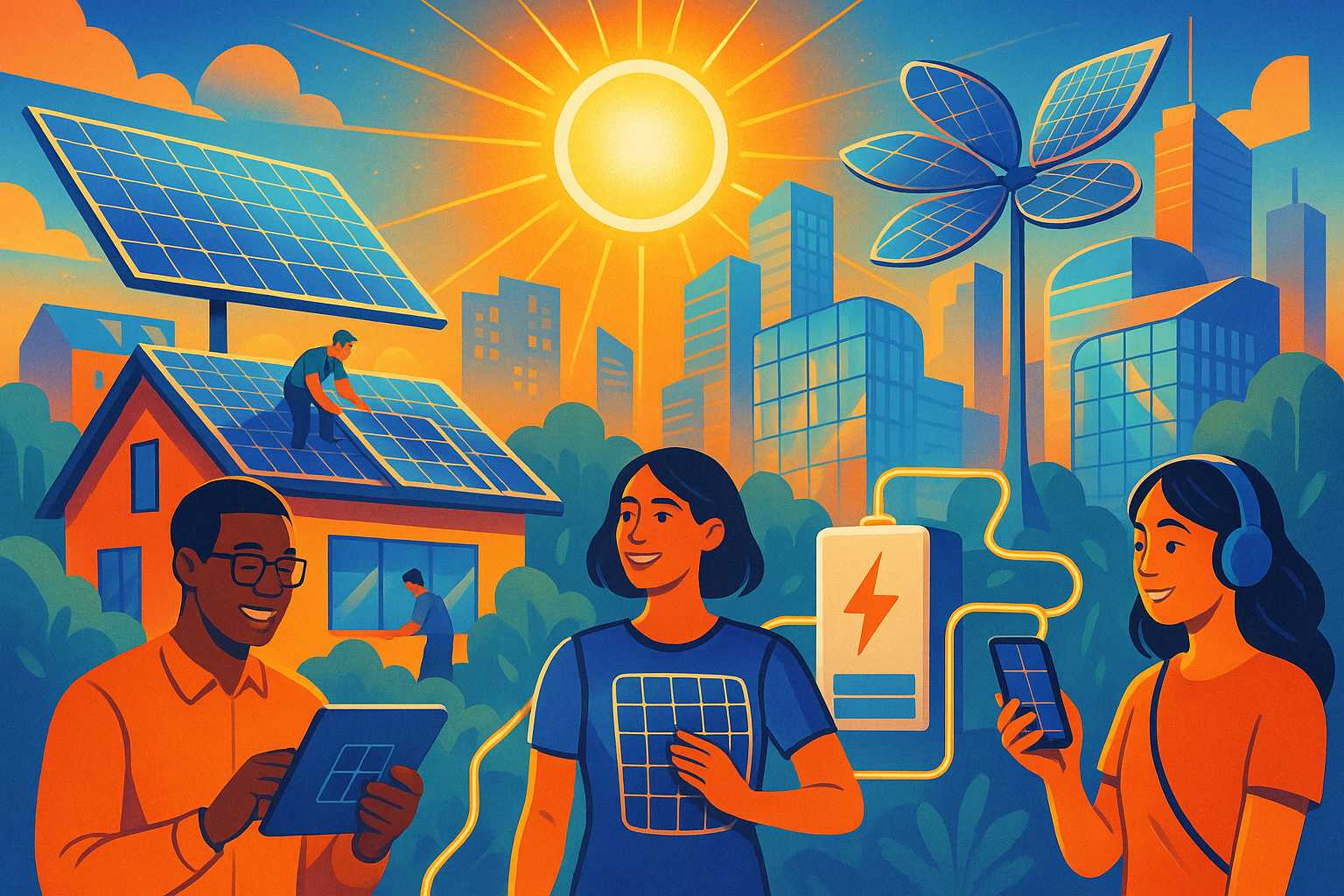Tag: Innovation
-

The Hidden Wonders of the Deep: How Hydrothermal Vents Are Rewriting the Story of Life
When we think of the origins of life on Earth, teeming warm ponds and sunlit shallows often come to mind. Yet, some of the most astonishing clues are being found in the pitch-black, high-pressure depths of our oceans—around hydrothermal vents. These exotic underwater hot springs are quietly rewriting our understanding of biology, chemistry, and even…
-

The Secret Life of Plants: How Communication in the Green World Could Change Ours
By Zane – Science Explorer When most of us stroll through a park or tend to our houseplants, we marvel at the beauty of leaves and blossoms, often forgetting that plants live in a world of subtle communication and bustling activity. Recent scientific discoveries are uncovering secret channels in the plant kingdom that challenge everything…
-

Tapping the Sun: How Breakthroughs in Solar Energy Are Powering Our Future
By Zane – Science Explorer From powering our homes to fueling our devices, the sun’s energy has always been an abundant resource. But only recently has science catapulted solar technology into an era where clean, renewable power could become the cornerstone of our daily lives. Let’s delve into the burgeoning world of solar energy and…
-

CRISPR: The Gene-Editing Revolution Changing Medicine and Beyond
In recent years, a groundbreaking technology has quietly been rewriting the very code of life. Known as CRISPR, this gene-editing tool is revolutionizing biological science, medicine, and even agriculture. But what exactly is CRISPR, and why is it considered one of the most important scientific breakthroughs of the 21st century? CRISPR, short for Clustered Regularly…
-

Unlocking the Mysteries of Sleep: Why Our Nights Shape Our Days
Sleep: it’s something we spend roughly a third of our lives doing, yet scientists are only beginning to understand its profound importance. From memory formation to emotional regulation, the study of sleep is revealing just how deeply it impacts our daily lives, and what happens when we don’t get enough. The Science of Shuteye Sleep…
-

The Quantum Leap: How Quantum Computing is Poised to Revolutionize Our World
Quantum computing has become one of the most exciting frontiers in science and technology, often discussed with both awe and a hint of sci-fi mystique. But what exactly is quantum computing, and how might it impact our daily lives? Let’s unravel this breakthrough together. What Makes Quantum Computers Different? In classical computers—like the one you’re…
-

How Technology is Empowering Personalized Learning in Education
In recent years, the educational landscape has undergone a significant transformation, largely fueled by technological advancements. The concept of personalized learning—tailoring educational experiences to individual student needs—has shifted from a distant ideal to a tangible reality. Let’s explore how technology is making personalized learning more accessible and effective than ever before. The Shift Toward Personalization…
-

Sustainable Fashion: Reimagining Our Wardrobes for a Greener Future
In recent years, the fashion industry has been undergoing a significant transformation—one fueled by an urgent need to address environmental concerns and ethical considerations. Sustainable fashion is emerging at the forefront, offering consumers and creators a new roadmap for style that’s mindful of the planet and its people. But what does it really mean to…
-

Synthpop and the Digital Dream: The Soundtrack of a New Era
Hello, music lovers! Theo here, tuning you in to a pivotal era that electrified not only our sound systems but also our imaginations—the rise of synthpop. Fasten your seatbelts as we journey through a genre that bridged the analog and the digital, reshaped popular music, and continues to echo in today’s sonic landscape. The Electronic…
-

The Culinary Evolution: How Technology is Revolutionizing Cooking
From the alchemic transformations of our ingredients in a heated pan to the molecular gastronomy techniques that delight our senses, cooking has always been a blend of art and science. However, as we forge deeper into the 21st century, technology is playing an increasingly transformational role in the culinary world. Technology Meets the Kitchen With…
